• Feb 3 – The moon is at first quarter phase with 51% of its surface illuminated. You may well wonder why it is called a first quarter phase if over half of it is lit up. We say it is at first quarter because the moon has traveled one quarter of its way around the Earth from where it was during new moon phase.

Feb 5 – The moon is now at waxing gibbous phase. Look for it near Aldebaran, the alpha star in the constellation of Taurus the Bull. The name “Aldebaran” is from an Arabic word meaning “the Follower”, as the star appears to follow the Seven Sisters (the Pleiades) across the sky each night.
Feb 6 – The moon is at perigee, the closest distance to Earth for the month (368, 816 km). During the early morning hours before sunrise, look for the planet Jupiter near the star Spica.
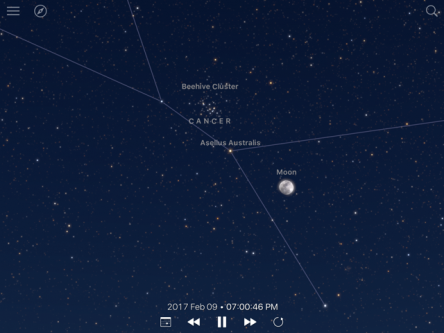
• Feb 9 – The moon is near the Beehive Cluster (M44), one of the closest star clusters to the planet Earth at 600 light years away in the constellation of Cancer the Crab. You may not see much of the cluster this night due to the glare of the moon but be sure and come back to this spot to check it out with binoculars or a small telescope. Also, be sure and check out our Night Sky episode from March of 2016 which features the Beehive.

• Feb 10th – Full moon and a penumbral lunar eclipse. The darkest part of the Earth’s shadow, the umbra, misses the moon this evening but the penumbra, the lighter part of the Earth’s shadow, will envelop it. Penumbral lunar eclipses are often subtle but you will notice a faint darkening of the moon. Look for the eclipse already underway as the moon begins to rise at 5:44 PM CST, maximum eclipse at 6:43 PM, the eclipse ends at 8:53 PM.
Feb 14 – Happy Valentine’s Day!
With the moon out of the way, the next two weeks is a great time to see the Zodiacal Light. Find as dark an observing site as possible, go out about 90 minutes after sunset, and face west. Look for a very large, diffuse cone or wedge-shaped glow of light with its base near the western horizon (you might even mistake it for light pollution) and tapering off to a point as you look up. Your viewing window will only last for about an hour.
This time of the year, our view of the ecliptic (the apparent path of the sun, moon and planets across the sky and which represents the plane of our solar system seen edge on) relative to the horizon is such that viewing the Zodiacal Light becomes more likely. This ephemeral and rather rare phenomena is the result of sunlight being scattered off comet and asteroid dust out in space.

Brian May, lead guitarist with the classic rock band Queen, completed his PhD thesis in 2007 with his “A Survey of Radial Velocities in the Zodiacal Dust Cloud”. May began the project nearly 40 years ago when Queen first began producing hit songs, the band’s success led him to abandoning his thesis for a career as a rock star. After being prodded by astronomer Sir Patrick Moore, May went back to finish it.
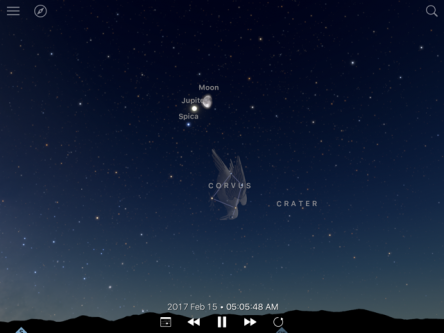
• Feb 15th – The waning gibbous moon can be seen near the planet Jupiter in the morning.
• Feb 18th – The moon is at apogee, its furthest distance from Earth for the month at 404,376 km.
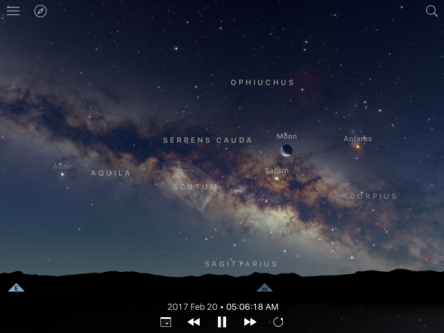
• Feb 20th – Look for the moon near the bright planet Saturn in our morning sky.
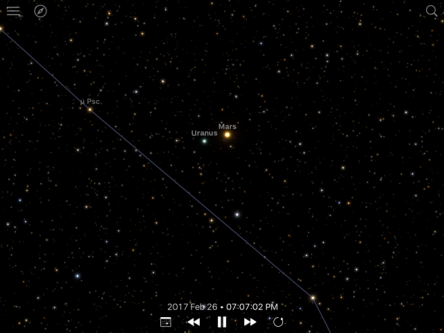
• Feb 26 –The moon is now at new phase and cannot be seen (8:58 AM CST). Mars is within a half a degree above Uranus in our western evening sky.
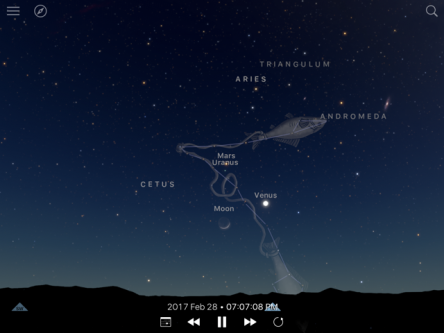
• Feb 28th – The waxing crescent moon, Venus, and Mars will form a triangle in our western sky right after sunset.
